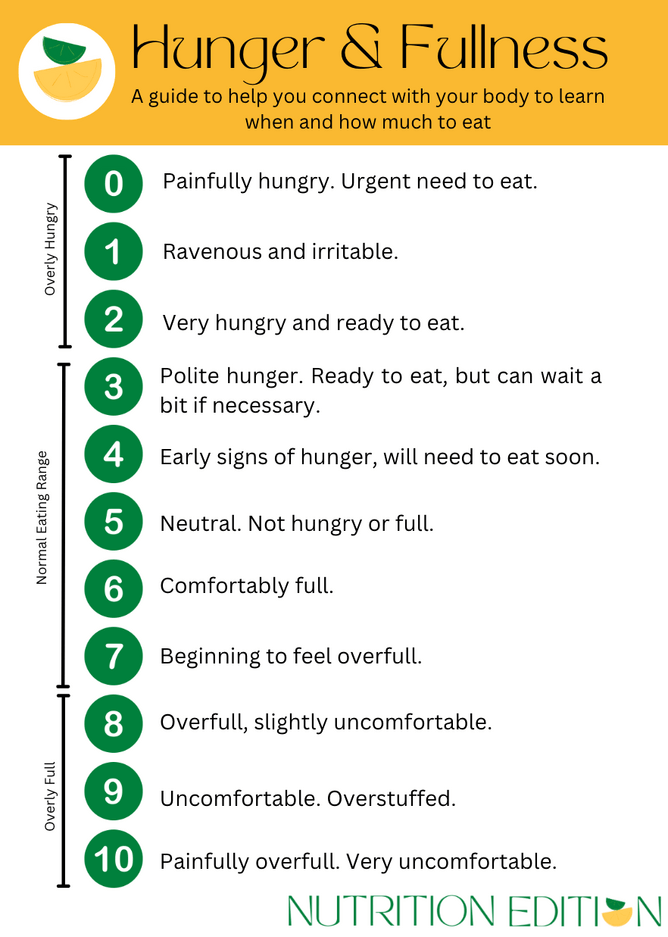In our busy lives, it’s easy to eat on autopilot, ignoring our body’s natural hunger and fullness cues. The hunger-fullness scale is a simple yet effective tool to help you tune into these signals, encouraging a more mindful and balanced approach to eating.
What is the HungerFullness Scale?
The scale ranges from 1 (ravenous) to 10 (uncomfortably stuffed). Here’s the breakdown:
The goal is to start eating when you’re at a 3 or 4 and stop at a 6 or 7, allowing your body to guide your portion sizes naturally.
Why should I use it?
Encourages Mindful Eating: The scale helps you pause and consider whether you’re eating out of hunger or habit, reducing mindless snacking.
Prevents Overeating: Checking in with your fullness during meals can prevent that heavy, uncomfortable feeling from eating too much.
Builds Intuitive Eating Habits: By reconnecting with your hunger and fullness cues, you can move away from restrictive diets and build a healthier relationship with food.
How to Use It
Before Eating: Rate your hunger. Are you truly hungry, or is it emotional or boredom driven?
During Eating: Pause midway and reassess. Are you still hungry, or is it time to stop?
After Eating: Reflect on your fullness. Did you stop at a comfortable level? Use this awareness to adjust future portions or meal timing.
Practical Tips
Eat Slowly: It takes about 20 minutes for your brain to register fullness.
Avoid Distractions: Focus on your food to notice your body’s cues.
Practice Patience: Reconnecting with hunger signals takes time, so be kind to yourself.

